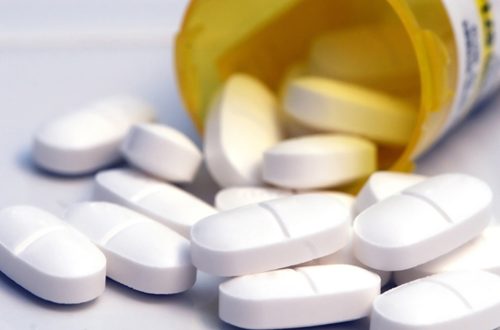Tramadol is an opioid pain medication whose number of prescriptions increased significantly in just five years. Unfortunately, reports have also shown that emergency admissions caused by its misuse and abuse have soared by 250% from 2005 to 2011.
To prevent these statistics from continuously rising, treatment must be more accessible to individuals who are suffering from physical dependence, addiction, and polysubstance abuse.
If you are apprehensive about taking detox, you have to understand that it is the only way out towards recovery. Detox, especially with controlled drugs such as Tramadol, always comes with unpleasant conditions. However, there are a lot of means to make the process more bearable.
How Does Tramadol Detox Work?
 To progress to further treatment and live a drug-free life, you have to first get rid of the substance in your system. This does not happen by suddenly quitting your usual dose, or else you will experience an extreme discomfort that is mostly impossible to endure.
To progress to further treatment and live a drug-free life, you have to first get rid of the substance in your system. This does not happen by suddenly quitting your usual dose, or else you will experience an extreme discomfort that is mostly impossible to endure.
Detoxing Tramadol requires the guidance of an expert. Your physician is the best person who can help you assess the level of your condition and identify the right dose you should start your taper schedule. Your detox plan must essentially be guided by medical advice.
Tapering your doses gives more time for your body to slowly adapt to the gradual flushing of the substance in your system. This prevents you from experiencing a surge of withdrawal symptoms which can be intensely painful.
Just like other opioid painkillers, Tramadol acts on the brain’s opioid receptors to manage the pain from illnesses such as osteoarthritis and fibromyalgia. With constant use for some time, the body’s natural opioid receptors become dependent on the presence of the drug.
When detox starts, the usual brain activity is disrupted, with the brain unable to cope with all the chemical changes going on. This then results in a negative reaction called withdrawal syndrome, a condition that can cause serious distress if not managed with medical care.
What Does Tramadol Detox Pain Feel Like?
 Detoxing Tramadol makes you experience nausea and vomiting. It can cause you to suffer from abdominal cramps, chills, and extreme sweating. The condition closely resembles having an extremely bad flu. Headaches and muscle pain are present, plus insomnia and loss of appetite.
Detoxing Tramadol makes you experience nausea and vomiting. It can cause you to suffer from abdominal cramps, chills, and extreme sweating. The condition closely resembles having an extremely bad flu. Headaches and muscle pain are present, plus insomnia and loss of appetite.
Imagine all these symptoms going on at once at an intense level. It can be really painful. However, this will only happen due to the following reasons: you decided to detox without any medical help and you quit cold turkey.
Withdrawal is not only about physical pain. Your psychological aspect is also affected by the changes happening inside your brain. This makes you feel agitated and restless. Your anxiety brings major panic attacks and worst, you experience suicidal thoughts due to depression.
Detox outcomes can be stressful, but not when your body is supported by medication and therapy. If you detox all on your own, you will just resort to returning to substance use later on just so you can relieve your pain. And this is dangerous. Withdrawal reset makes every attempt complex and possibly fatal.
Tramadol may be less potent than other opioid painkillers, but it can cause fatal symptoms. You must watch out for dehydration, unusual blood pressure and heart rate, as well as seizures. These conditions require immediate medical care as they can lead to death.
What Are Ways to Find Relief During Detox
Most readings recommend taking warm baths when your body is filled with pain such as headache and muscle pain. The temperature soothes the nerves which are suffering from inflammation and causing you to feel body pain. It also induces a healthy circulation of blood in your body, which can reduce your agitation and panic attacks.
Others also recommend acupuncture for relief. However, taking the following steps as you detox are guaranteed safe and effective in preventing yourself from dealing with intense withdrawal pain. Conditions during detox can still be unpleasant but at least, less intense and more bearable. Here are the steps:
 Create a detox plan with a physician.
Create a detox plan with a physician.- Follow your taper schedule.
- Take your medications as prescribed.
- Attend therapy sessions.
- Practice a healthy lifestyle.
Working with a physician during detox is highly essential. It is proven to be the safest and most effective means to really get past any level of substance dependence.
Your doctor can help you map out your taper schedule. This is crucial in managing your pain. They are also valuable in giving you prescribed drugs that you cannot purchase without their prescription.
The availability of medications intended specifically for opioid withdrawal is a great advantage during detox. These have passed the approval of the FDA and have been reliable for more than 40 years already.
This is the use of Methadone and Buprenorphine, which can be used as maintenance drugs as well. They are very effective in reducing cravings for the drug and eventually, preventing the potential occurrence of relapse.
There are also over-the-counter drugs you can take to soothe specific pain. Your problem with headaches and nausea or gastrointestinal pain can be relieved by OTC drugs. You can also take on sleep aids for insomnia and antidepressants for mental health problems, but these must come with a prescription.
Once you surpass the physically challenging disposition of detox, you can start attending therapy sessions to aid your psychological condition, and your overall health. Experts always say that medication alone is not enough to sustain progress.
Attending therapy sessions – individual or group – help unravel personal triggers for substance use. By talking to a therapist, you can establish ways to overcome these triggers. Support groups also help you sustain your path to recovery. The 12-Step Program is the most recommended approach to staying sober.
Finally, a healthy lifestyle boosts your strength and immunity during detox. This is as simple as engaging in exercise, eating fruits and vegetables, and staying hydrated. Some people also recommend taking supplements and adding yoga or meditation to their routine.





